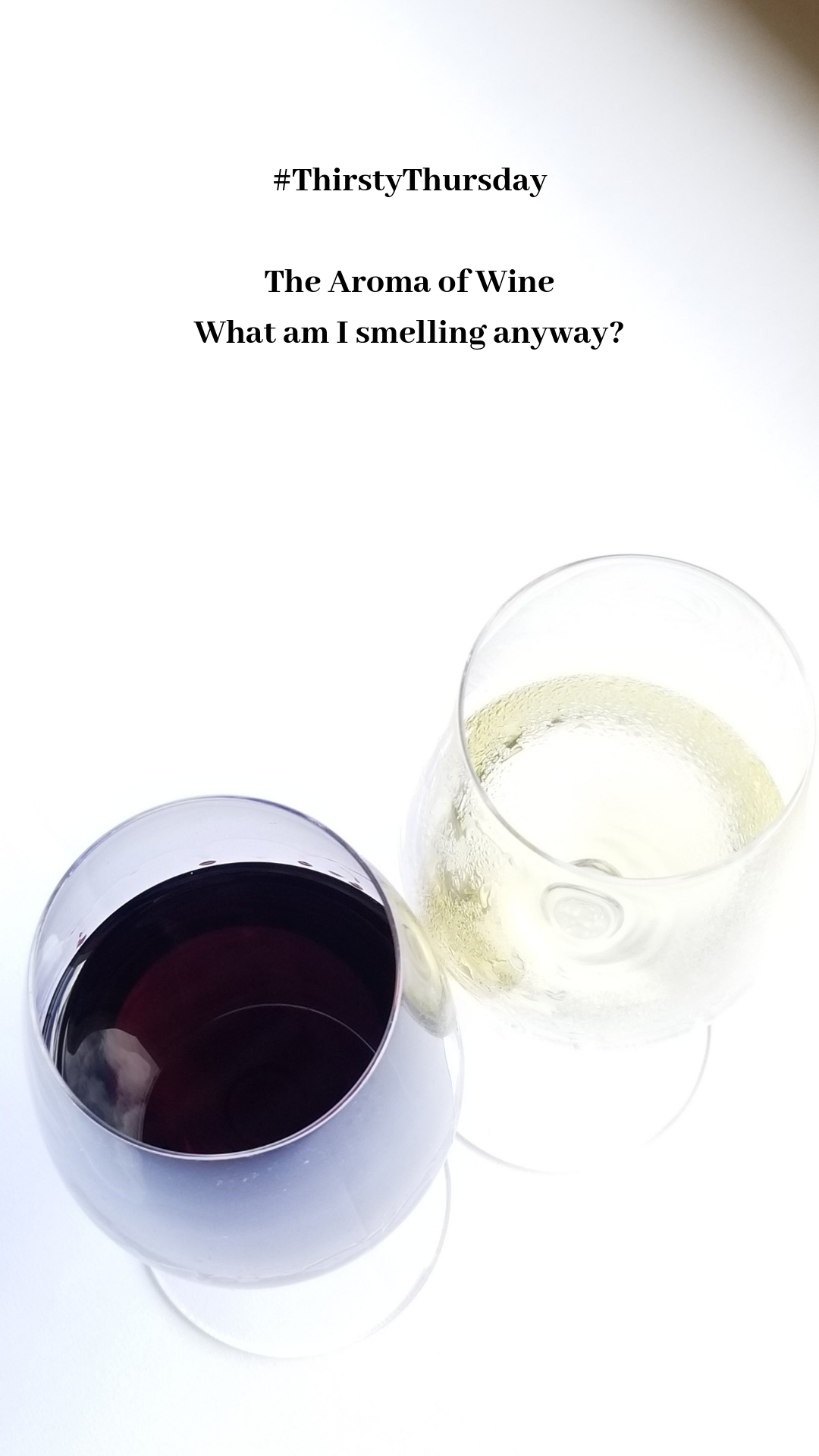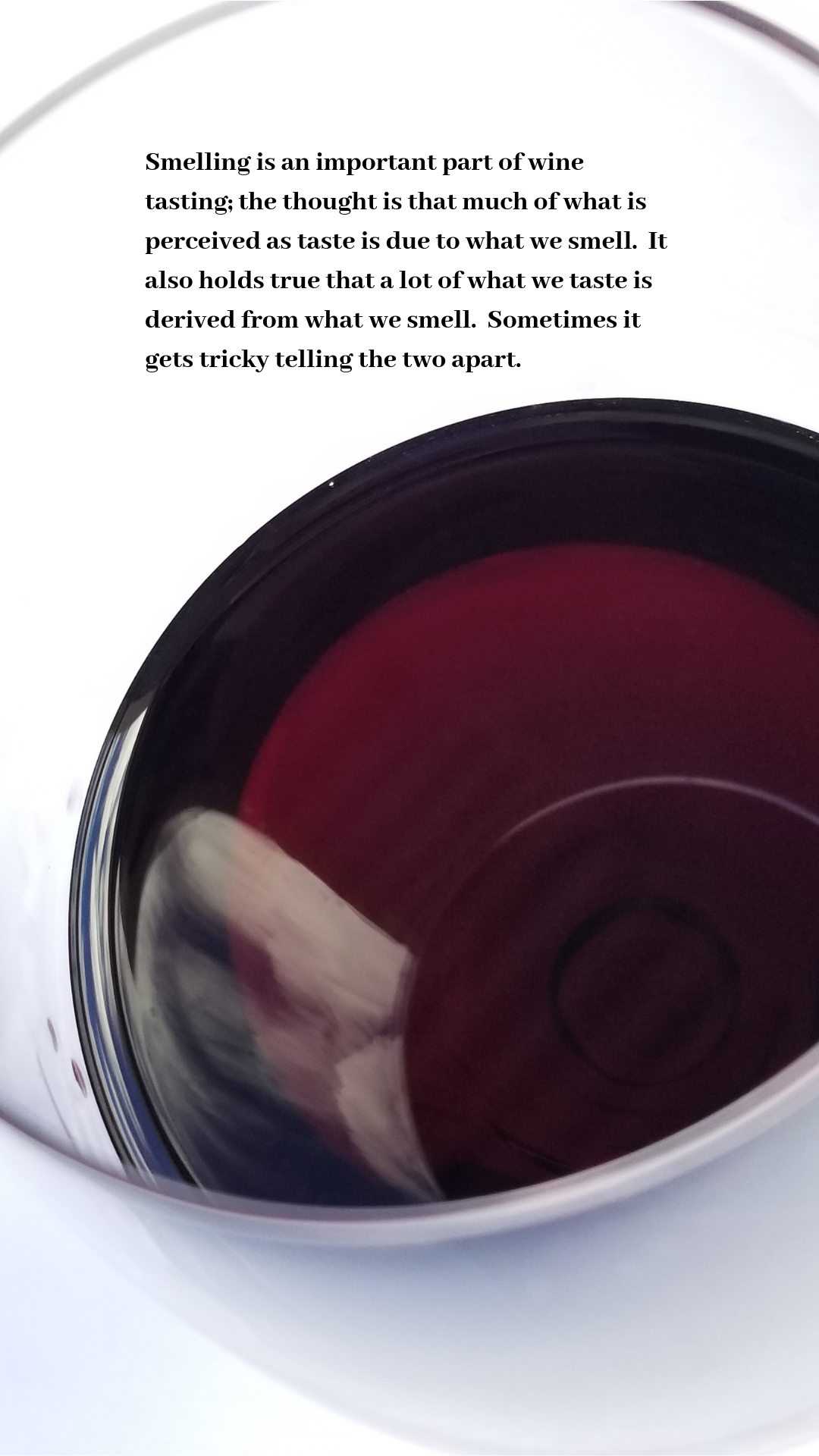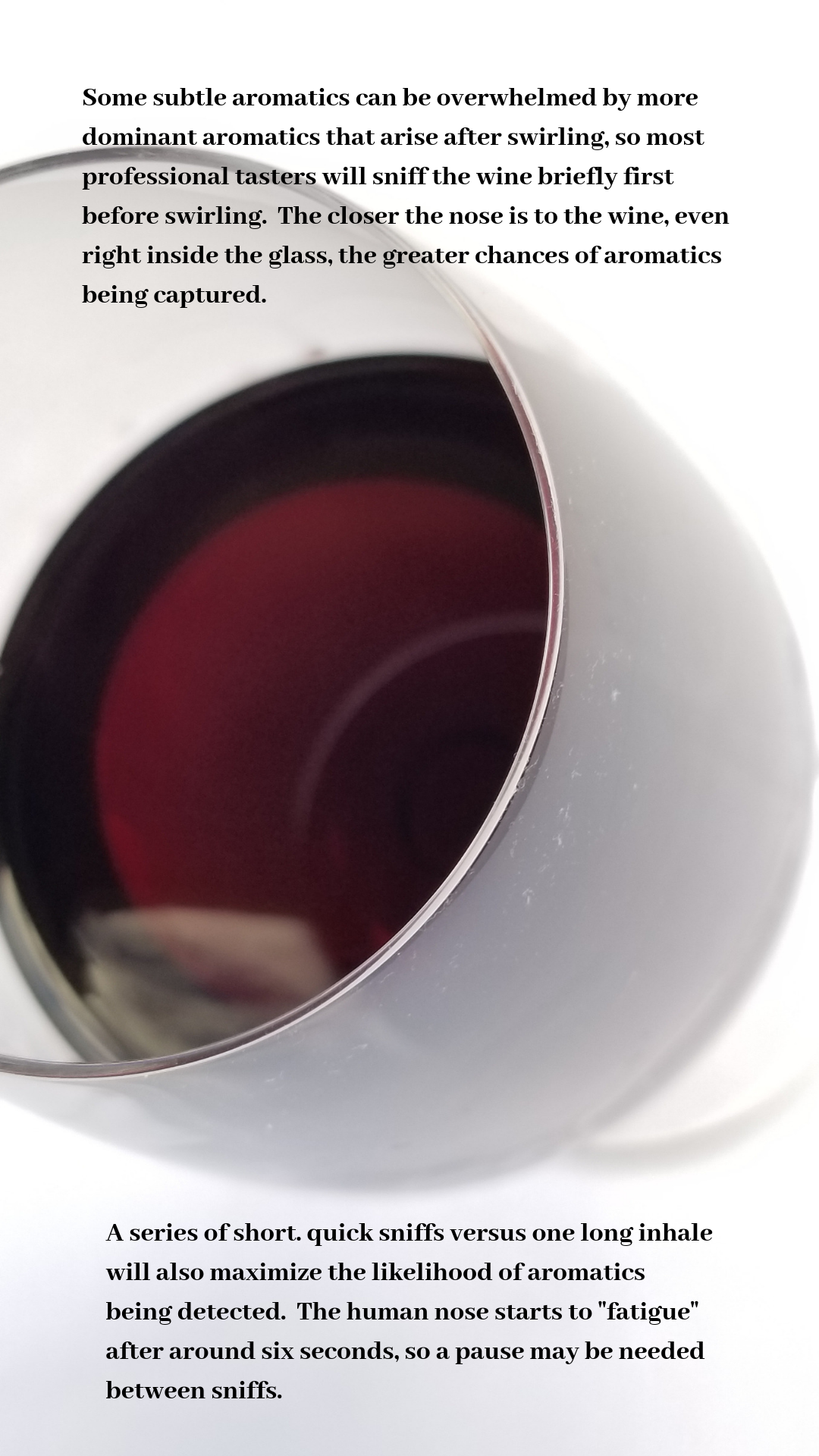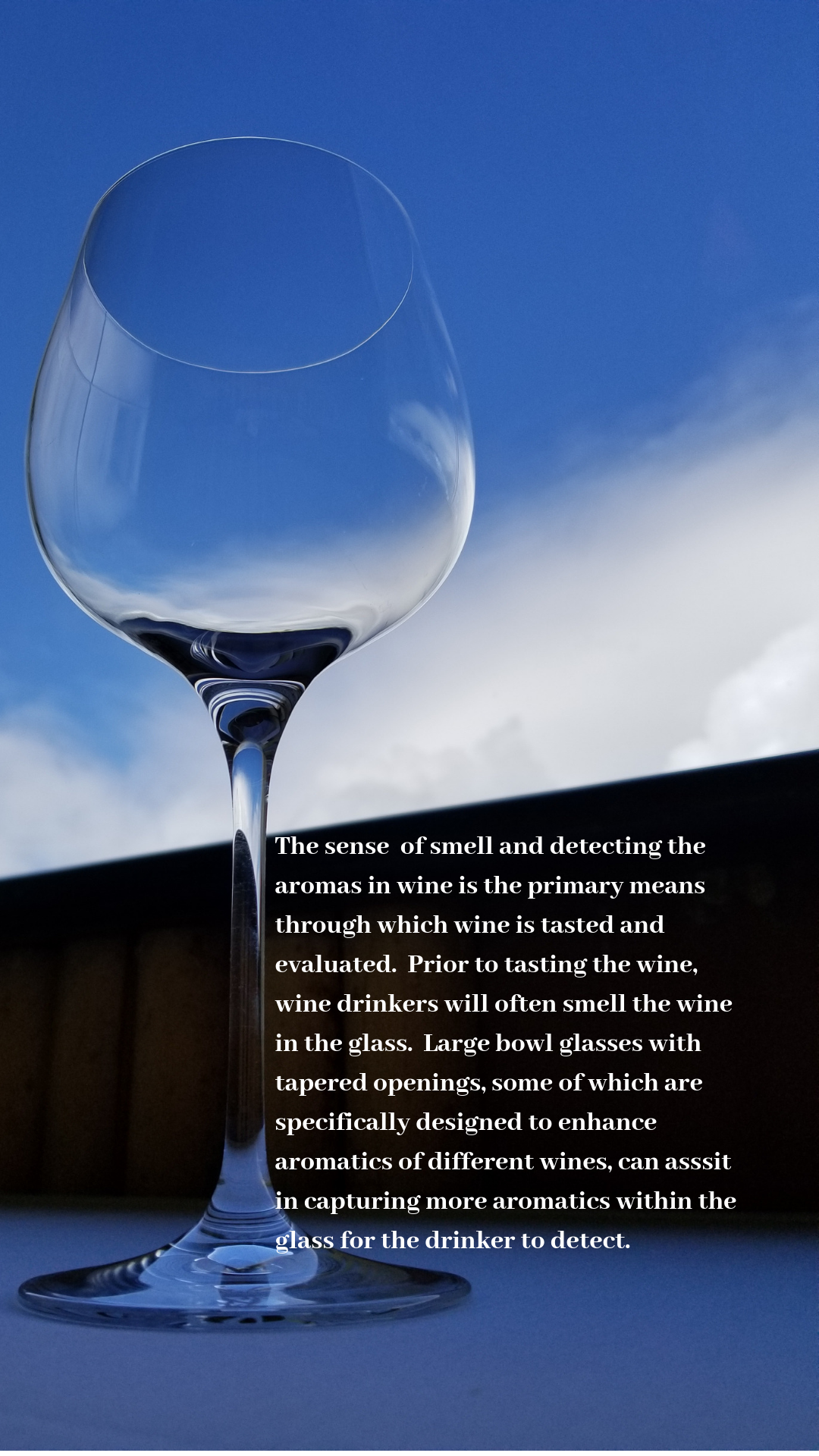The Aroma of Wine…What Am I Smelling Anyway?
Smelling is an important part of wine tasting; the thought is that much of perceive as taste is due to what we smell. It also holds true that a lot of what we taste is derived from what we smell. Sometimes it gets tricky telling the two apart.
The aromas of wine are more diverse than its flavors. The human tongue is limited to the primary tastes perceived by taste receptors on the tongue; sour, bitter, salty, sweet and savory. The wide array of fruit, earthy, leathery, floral, herbal, mineral, and woodsy flavor present in wine are derived from aroma notes sensed by the olfactory bulb. In wine tasting, wine is sometimes smelled before being drunk in order to identify some components of the wine that may be present. Different terms are used to describe what is being smelled. The most basic term is aroma which generally refers to a "pleasant" smell as opposed to odor which refers to an “unpleasant” smell or possible fault. The term aroma may be further distinguished from bouquet which generally refers to the smells that arise from the chemical reactions of fermentation and aging of the wine.
In professional wine tasting, there is generally a distinction made between "aroma" and "bouquet", while in casual wine tasting these two terms are used interchangeably. An aroma refers to the smells unique to the grape variety and are recognized as such — lychee with Gewürztraminer or black currant with Cabernet Sauvignon. These are smells that are commonly associated with a young wine. As a wine ages, chemical reactions among acid, sugar, alcohol and phenols create new smells that are known as a wine's bouquet. These can include honey in an aged Sauternes or truffle in a Pinot Noir. The term bouquet can also be expanded to include the smells from fermentation and oak influence. Wines are sub-divided into three categories - primary, secondary and tertiary aromas. Primary aromas are those specific to the grape variety. Secondary aromas are from fermentation. Tertiary aromas develop through either bottle or oak aging.
Within wine there are volatile and non-volatile compounds that contribute to the makeup of a wine's aroma. During the fermentation and for the first few months of a wine's existence, chemical reactions among the compounds occur frequently and a wine's aroma will change quickly during this time. As a wine ages and matures, changes and developments in aroma will continue to take place but at a slower rate.
Some of the identified aroma compounds include the following:
Methoxypyrazine - grassy, herbaceous aroma compound associated with Cabernet Sauvignon and Sauvignon blanc.
Monoterpenes - responsible for the floral aromatics of varieties like Gewürztraminer, Muscat and Riesling.
Norisoprenoids - aromatic compounds which produce some of the spice notes associated with Chardonnay and for the different spice notes associated with Syrah. Other aromas produced are the raspberry aromas associated with red wine, or the rose oil aromas associated with Pinot noir and vanillin.
Thiols/Mercaptans - sulfur contains compounds that can produce an aroma of garlic and onion that is considered a wine fault. They have also been found to contribute to some of the varietal aromas associated with Cabernet Sauvignon, Gewürztraminer, Merlot, Muscat, Petit Manseng, Pinot blanc, Pinot gris, Riesling, Scheurebe, Semillon and Sylvaner.
The sense of smell and detecting the aromas in wine is the primary means through which wine is tasted and evaluated. Prior to tasting the wine, wine drinkers will often smell the wine in the glass. Large bowl glasses with tapered openings, some of which are specifically designed to enhance aromatics of different wines, can assist in capturing more aromatics within the glass for the drinker to detect. Wines served at warmer temperature will be more aromatic than wine served cooler due to heat's ability to increase the volatility of aromatic compounds in the wine. Swirling, or aerating, the wine will increase available surface area, increasing the rate at which aroma molecules volatilize. Some subtle aromatics can be overwhelmed by more dominant aromatics that arise after swirling, so most professional tasters will sniff the wine briefly first before swirling. The closer the nose is to the wine, even right inside the glass, the greater chances of aromatics being captured. A series of short, quick sniffs versus one long inhale will also maximize the likelihood of aromatics being detected. The human nose starts to "fatigue" after around six seconds and so a pause may be needed between sniffs.
When wine is sipped, it is warmed in the mouth and mixes with saliva to vaporize the volatile aroma compounds. These compounds are then inhaled "retro-nasally" through the back of the mouth to where it is received by nearly five million nerve cells. The average person can be trained to distinguish thousands of smells but can usually only name a handful when presented with many aromas. Detecting an aroma is only part of wine tasting. The next step is to describe or communicate what that aroma is. Different individuals have their own way of describing familiar scents and aromas based on their experiences. There are varying levels of sensitivity and recognition thresholds so one person might smell one thing while another person does not perceive that same smell at all.
- Kerry Ichimasa, Assistant Wine Director




